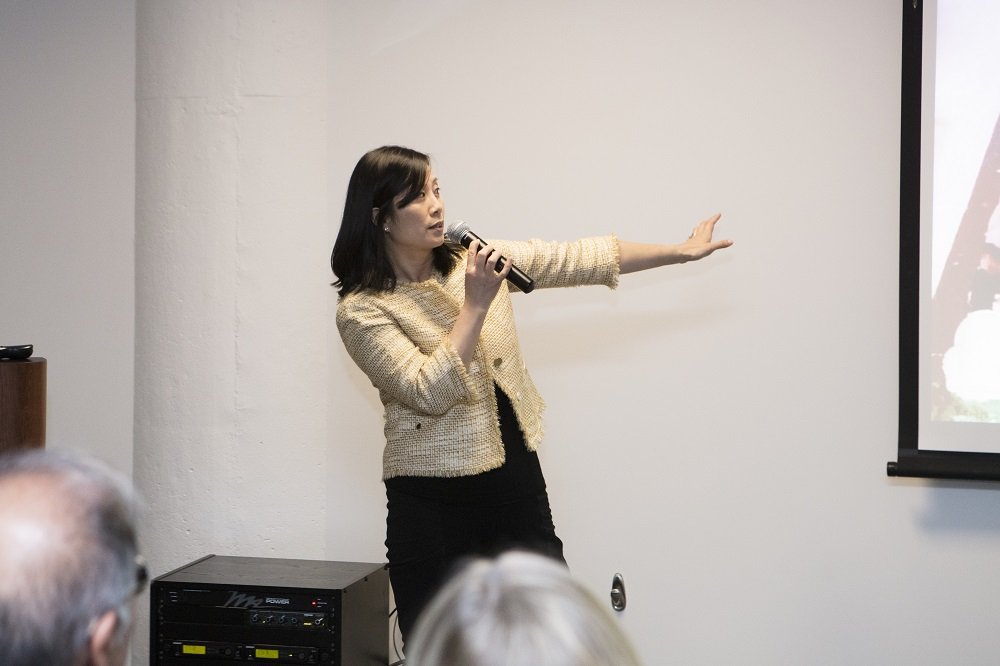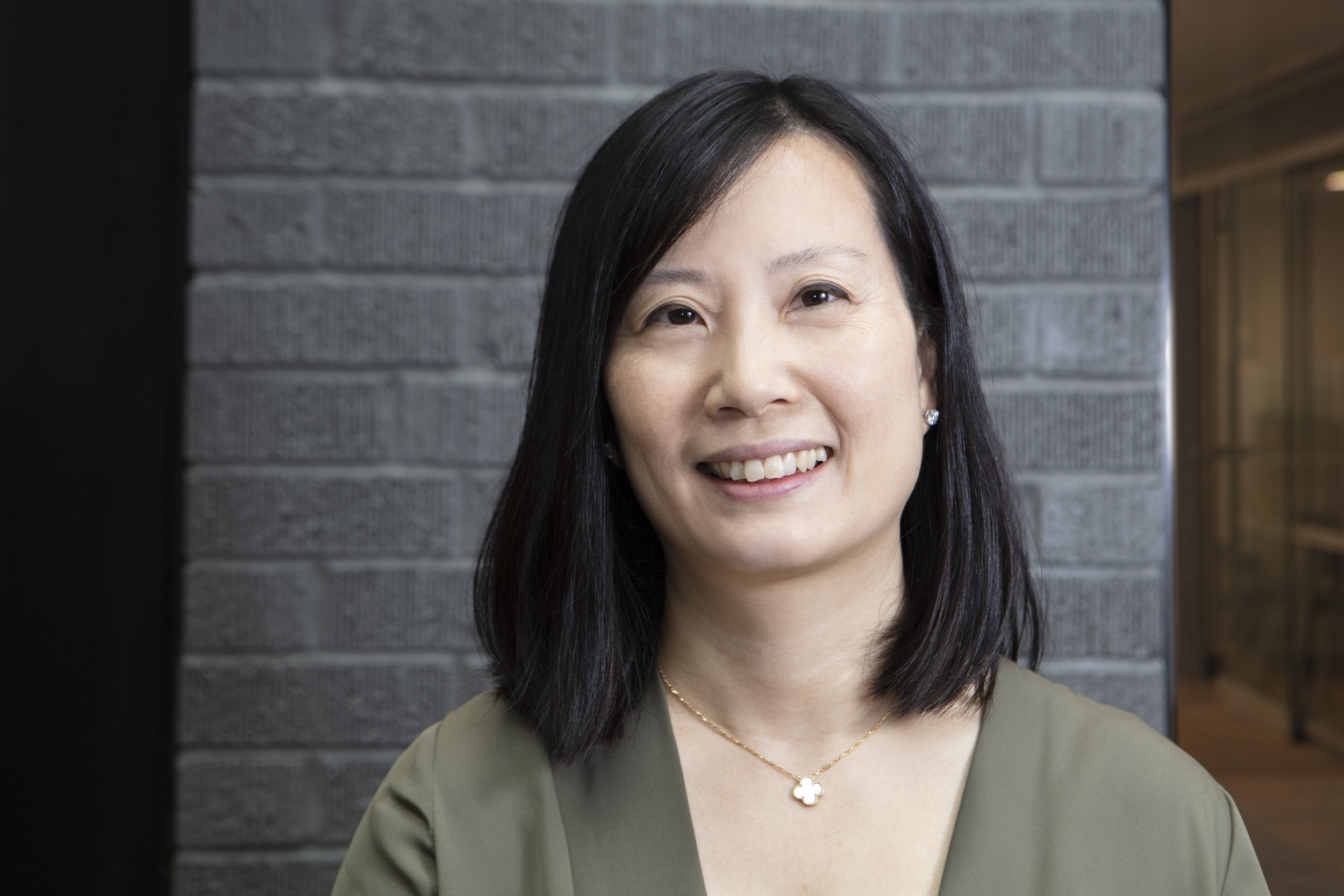Ann Wu MD '98 MPH '07 RAE '17
I went to MIT for college, and I was a biology major. Initially I thought I wanted to pursue a PhD program after college. Then, during my sophomore year, I took a course called Genetics in Modern Medicine during the Independent Activities Period (IAP) term in January. It was taught by David Housman and Cliff Tabin, and it focused on the relationship between molecular biology, genetics, and diseases. This was my first time seeing patients and the effects science and research could have on discovering treatments for their diseases! Patients with various diseases would come into the class and tell us about their disease. I remember one patient who had retinoblastoma. He needed to have bilateral enucleation–removal of both of his eyes because by the time his retinoblastoma was diagnosed, it was too late to save his eyes. But, if he had been born now, his eyesight could potentially be saved with earlier diagnosis. Or possibly, one of his eyes could have been saved— so this was my first time seeing the effect medicine could have on patients and how it could significantly improve patients’ lives. I realized at that moment that I wanted to pursue medicine.
Then, I applied to medical school, and I went to Harvard Medical School. I was open to pursuing almost every field I rotated on in medical school! Ultimately, I ended up loving pediatrics. Drawing from my prior amazing experience in that genetics class, I enjoyed studying many of the genetic diseases that manifest in children. I also loved the different developmental stages of children. Interacting with an infant is very different from interacting with a school-age child or teen. After medical school, I did my residency in the Boston Combined Residency Program, which is a joint program between Boston Children’s Hospital and Boston Medical Center. Afterwards, I wanted to practice, so I went into private practice, which was a terrific experience — but I also learned that private practice medicine was just not for me.
I participated in the Harvard-wide Pediatric Health Services Research Fellowship to re-enter research and academia. I was based in the Department of Population Medicine at Harvard Medical School and Harvard Pilgrim Health Care Institute, and I’ve been here ever since. I am now the Director of the Center for Healthcare Research in Pediatrics in this department. My research is in asthma and genomics, and it spans a wide range, from genetic epidemiology to translational and health services research. It’s important to me to try to inform patient care and public policy. I also continue to see patients in the Boston Children’s Hospital Primary Care Center, and this work helps me inspire some of my research. For example, many patients tell me that inhaled steroids do not help prevent their asthma symptoms. I now believe that some of these patients do not respond to inhaled steroids based on their genetic makeup.
How did you transition from lab bench research to some more of the computational work that you do today?
In college, I was mainly working in bench labs. For my freshman and sophomore year UROPs (Undergraduate Research Opportunities Program), I studied microtubule-associated proteins. I’ll never forget isolating proteins from chicken brains. After we extracted the brains, we donated the chickens to a homeless shelter. After the Genetics in Modern Medicine course, I went to work with Judah Folkman, who was at Boston Children’s Hospital, and was a pioneer in angiogenesis research. Even though I was still doing bench research at the time, the research had clearer clinical implications. One of my projects was to isolate an anti-angiogenesis agent from mouse urine.
In residency, I had an opportunity to participate in multiple research projects. In one of these projects, we recruited children from the Boston Children’s Hospital Primary Care Center and measured their hemoglobin, hematocrit, and iron markers. The goal was to determine if the hemoglobin reticulocyte count (CHr) could be an earlier marker for iron deficiency before the development of anemia. Iron deficiency is easily treatable with oral iron, but if untreated, can lead to decreased cognitive function, decreased IQ, and other symptoms. When I finished residency, I passed the project to another resident who passed it to a third resident. Finally, it was published in JAMA, and it was my first taste of clinical research!
When I was leaving private practice and entering academia again, I knew I wanted to do something that affected large populations of people and would have direct clinical impact. A collection of studies that I led a few years ago examined the effectiveness of and adherence to controller medications for asthma. In order to make conclusions that are generalizable to large populations, we needed large, diverse populations. Thus, we collaborated with sites from Oregon, California, Georgia, Washington D.C., Wisconsin, and our own site in Massachusetts. We combined electronic health record and insurer claims data for all of our sites. We found that adherence to controller medications for asthma is very poor. We found that even though inhaled steroids are more efficacious than leukotriene antagonists (another class of controller medications) in clinical trials, they are similarly effective in real-life populations.
More recently, I’ve been leading a group of studies looking at the interaction of age and single nucleotide polymorphisms (genetics) on asthma medication response. These studies also draw from diverse populations across the country, and we combine data from biobanks for these investigations. I love working with investigators with different areas of expertise from across the country. I also lead studies that assess the cost-effectiveness of genetic testing in newborns. We developed a microsimulation model that starts with 3.7 million newborns (that are born every year) and assesses the benefits, harms, and costs of conducting population-based screening of all of the newborns for genetic diseases.
Why asthma?
Asthma is the most common chronic illness in children, so it made sense for me to study asthma. When I was in private practice, I saw a lot of patients with asthma. We have effective medications for asthma, so it doesn’t make sense that morbidity from asthma is so high. Furthermore, asthma morbidity falls disproportionately on minority children. Black and Hispanic children have poor outcomes — they are more likely to be hospitalized and die, even after adjusting for socioeconomic status. For all of these reasons, I have chosen to dedicate my research to studying asthma.
How do you consider the social determinants of health in designing your studies?
Incorporating social determinants of health in population-based research is a challenge. Currently, I work with a faculty member who is working to develop methods for asthma risk prediction in a health plan setting while including information on social and financial hardship. Other investigators are also developing ways to geocode participants’ home addresses to approximate social determinants of health.
What’s especially exciting down the road for the field of genetics research?
Gene therapy is already making huge advances as last year gene therapy for sickle cell disease was found to be a success in preventing symptoms for three years. Also, there are already signs in the community that whole exome sequencing or genetic testing will become more widely available. The costs of sequencing and testing are becoming much lower, so testing is likely to be adopted. Many questions remain including who should get testing – should all newborns be tested, just high-risk newborns, or just siblings of individuals who are known to have a genetic disease?
What is your greatest Harvard Medical School memory?
It was just such an amazing experience overall. We had incredibly accomplished and inspiring professors, and I met some of my best friends there. I’m actually on my Alumni Reunion Committee, and we’re planning our next reunion.
I was also the 50th class at HMS to include women. To celebrate, HMS had celebrated with a symposium. Speakers included women alumni who talked about their careers. To be able to hear from these women and how they achieved work-life balance was just so inspiring.
Who have been your greatest mentors?
I had two really great mentors in college, both were my lab mentors. Frank Solomon and Judah Folkman. Dr. Solomon taught me that there is more to life than just work. Hearing the importance of a healthy work-life balance from an early stage of life was very important. A habit that Dr. Folkman taught me has continued to stick with me. He said to always keep a notebook documenting your failures because you never know when one of your failures will become a success. I learned the importance of learning from failures because everybody fails. Let’s just embrace that and learn from it.
Throughout every step of my career, from residency to fellowship to being a faculty member, I have had the great fortune to have the best mentors possible. The excellent mentorship I have received is the only reason I am where I am today. While I still rely on my mentors, I now spend time thinking about how to be a strong mentor to the fellows and junior faculty members I work with.
Ann Wu, MD
Ruth Sager Endowed Associate Professor in the Department of Population Medicine at Harvard Medical School and Harvard Pilgrim Health Care Institute
Pediatrician at Boston Children’s Hospital
MD 1998
MPH 2007
RAE 2017
Compiled and interviewed by Felicia Ho



